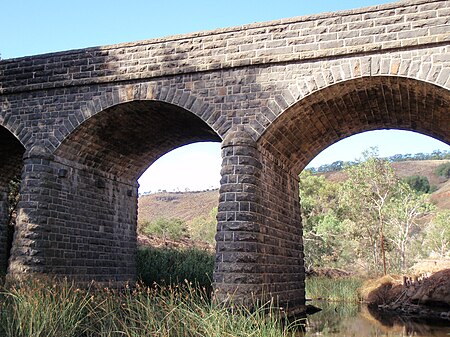Deep Creek (Melbourne)
City of HumeMelbourne Water catchmentRivers of Greater Melbourne (region)Rivers of Hume (region)Rivers of Loddon Mallee (region) ... and 3 more
Tributaries of the Maribyrnong RiverUse Australian English from April 2014Vague or ambiguous time from April 2014

The Deep Creek is a watercourse of the Port Phillip catchment, located in the outer north western suburbs of Melbourne, in the Australian state of Victoria.
Excerpt from the Wikipedia article Deep Creek (Melbourne) (License: CC BY-SA 3.0, Authors, Images).Deep Creek (Melbourne)
Barbiston Road, Melbourne Melbourne Airport
Geographical coordinates (GPS) Address Nearby Places Show on map
Geographical coordinates (GPS)
| Latitude | Longitude |
|---|---|
| N -37.669444444444 ° | E 144.80444444444 ° |
Address
Barbiston Road
3045 Melbourne, Melbourne Airport
Victoria, Australia
Open on Google Maps








